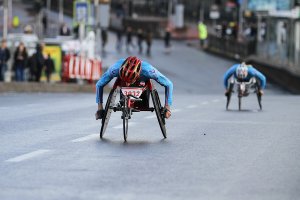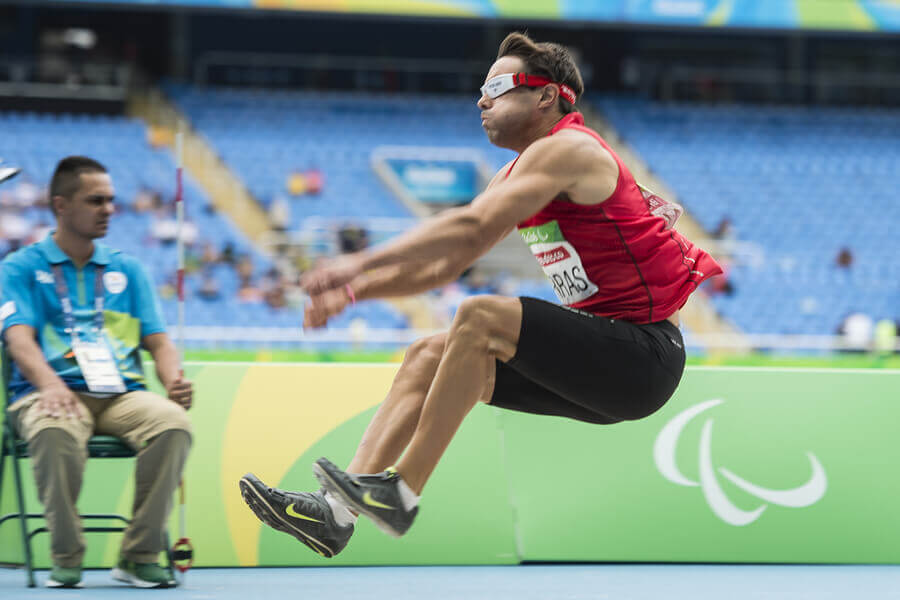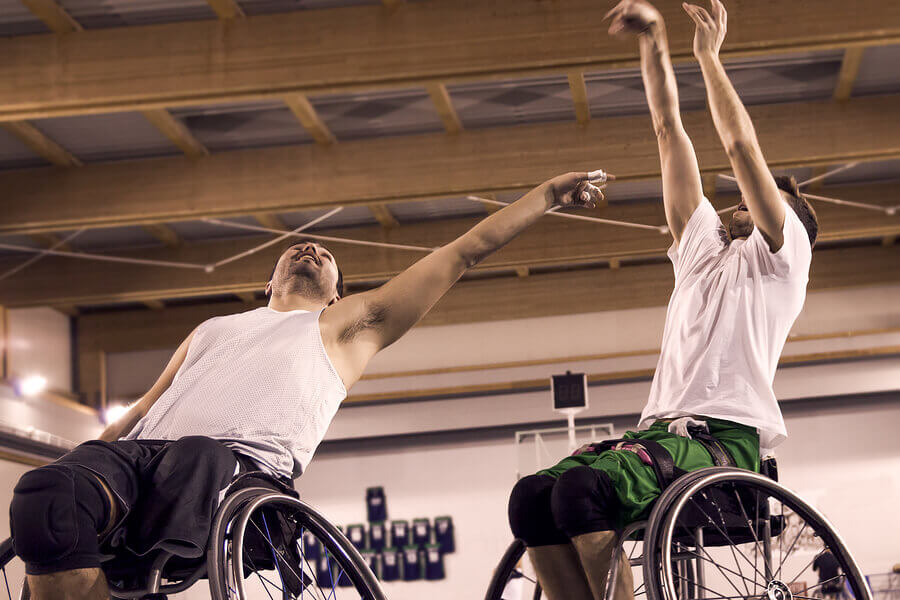What You Need to Know about the Paralympic Games

More modern and less popular than the original Olympic Games, physically, sensory and mentally-challenged athletes all participate in the Paralympic Games. Learn everything you should know about this competition in our post today.
A brief overview
Just as we should thank Pierre de Coubertin for the modern Olympic Games, we should also recognize German doctor, Ludwig Guttmann, for the Paralympic Games that exist today.
The neurologist originally created the Games so that people with cerebral palsy, intellectual impairment, amputations, blindness or paraplegia could not only play sports but also participate in an international-level competition as well.
Leading up to the Paralympic Games, Guttmann organized an athletic competition in 1948, the Stoke Mandeville Games, among World War II veterans who all suffered spinal injuries. Over time, the world around them slowly started to consider sports for people with disabilities. However, there’s still a long way to go.
Before the Paralympic Games
Before the Paralympic Games officially came to be, athletes with different disabilities completed in the first editions of the modern Olympic Games. But the Paralympic Games first started in Rome 1960 with 400 competitors from 23 countries, all of them being wheelchair athletes.
They competed in track and field, darts, basketball, fencing, snooker, swimming, table tennis, and archery. Italy was the biggest winner with 80 medals.
Since then, the Paralympic Games took place in the same year as the original Olympic Games despite being separate sporting events. And since the 1976 Montreal Games, athletes with other disabilities could compete as well.
Since the 1988 Seoul Olympics, the Paralympic Games take place immediately after the Olympic Games in the same installations with a few changes and adaptations. As a result, in 2001 the Olympic committees decided to follow a “one bid, one city” practice.

In addition, you should know about the Summer and Winter Paralympic Games— the latter starting later in 1976. Both Games follow the International Paralympic Committee (IPC) rules and regulations. As for the Paralympic Games logo, the flag shows three drops of color: red, green and blue.
Which sports are included in the Paralympic Games?
According to the IPC, there are ten categories of disability. Athletes with at least one type can participate in the Paralympic Games. Due to the variety of disabilities, the Games have a wide variety of different competing categories.
The physical disabilities include impaired muscle power, passive range of movement, loss or deficiency of a limb and small stature. In addition, hypertonia, ataxia, athetosis or visual disabilities are on the list as well. The Games include categories for intellectual or cognitive impairment, too.
The Summer Paralympic Games includes 22 sports and many of them are adaptations of the sports of the Olympic Games. Among the sports are track and field, badminton, wheelchair basketball, cycling, wheelchair fencing, soccer 5-a-side, weightlifting, horse riding, judo, swimming, canoeing, rowing, wheelchair rugby, wheelchair tennis, archery, shooting, triathlon, and seated volleyball.
Exclusively Paralympic sports
Then, there are two sports that are exclusive to the Summer Paralympic Games that many people aren’t aware of: goalball and boccia. The former is a game for blind athletes or those with visual impairment and uses a ball that emits sound.
In goalball, two teams of three players pit against each other on a court and each team has a goal to protect. The teams fight to score goals against their opponent by rolling the ball into the opposite goal. Viewers have to remain in silence throughout the entire game but can cheer when a team scores a goal.
On the other hand, boccia can be an individual, pair or team sport. Players have to toss their balls as close as possible to the white ball that marks the maximum distance. The sport is for athletes with cerebral palsy, brain damage or severe physical disabilities.

As for the Winter Paralympic Games, there are six sports. The sports are the following: biathlon, wheelchair curling, alpine skiing, Nordic skiing, ice hockey and snowboarding.
While the world “paralympic” might sound like “paralysis” or “paraplegia”, it actually refers to the Greek prefix. The prefix means “close to” or “similar to”. So, “paralympic” actually means “Games that are similar to the Olympics”.
Lastly, you should also know that the International Olympic Committee also recognizes two other events for people with disabilities: the Special Olympics and Deaflympics, the latter being an athletic competition for people with hearing disabilities.
More modern and less popular than the original Olympic Games, physically, sensory and mentally-challenged athletes all participate in the Paralympic Games. Learn everything you should know about this competition in our post today.
A brief overview
Just as we should thank Pierre de Coubertin for the modern Olympic Games, we should also recognize German doctor, Ludwig Guttmann, for the Paralympic Games that exist today.
The neurologist originally created the Games so that people with cerebral palsy, intellectual impairment, amputations, blindness or paraplegia could not only play sports but also participate in an international-level competition as well.
Leading up to the Paralympic Games, Guttmann organized an athletic competition in 1948, the Stoke Mandeville Games, among World War II veterans who all suffered spinal injuries. Over time, the world around them slowly started to consider sports for people with disabilities. However, there’s still a long way to go.
Before the Paralympic Games
Before the Paralympic Games officially came to be, athletes with different disabilities completed in the first editions of the modern Olympic Games. But the Paralympic Games first started in Rome 1960 with 400 competitors from 23 countries, all of them being wheelchair athletes.
They competed in track and field, darts, basketball, fencing, snooker, swimming, table tennis, and archery. Italy was the biggest winner with 80 medals.
Since then, the Paralympic Games took place in the same year as the original Olympic Games despite being separate sporting events. And since the 1976 Montreal Games, athletes with other disabilities could compete as well.
Since the 1988 Seoul Olympics, the Paralympic Games take place immediately after the Olympic Games in the same installations with a few changes and adaptations. As a result, in 2001 the Olympic committees decided to follow a “one bid, one city” practice.

In addition, you should know about the Summer and Winter Paralympic Games— the latter starting later in 1976. Both Games follow the International Paralympic Committee (IPC) rules and regulations. As for the Paralympic Games logo, the flag shows three drops of color: red, green and blue.
Which sports are included in the Paralympic Games?
According to the IPC, there are ten categories of disability. Athletes with at least one type can participate in the Paralympic Games. Due to the variety of disabilities, the Games have a wide variety of different competing categories.
The physical disabilities include impaired muscle power, passive range of movement, loss or deficiency of a limb and small stature. In addition, hypertonia, ataxia, athetosis or visual disabilities are on the list as well. The Games include categories for intellectual or cognitive impairment, too.
The Summer Paralympic Games includes 22 sports and many of them are adaptations of the sports of the Olympic Games. Among the sports are track and field, badminton, wheelchair basketball, cycling, wheelchair fencing, soccer 5-a-side, weightlifting, horse riding, judo, swimming, canoeing, rowing, wheelchair rugby, wheelchair tennis, archery, shooting, triathlon, and seated volleyball.
Exclusively Paralympic sports
Then, there are two sports that are exclusive to the Summer Paralympic Games that many people aren’t aware of: goalball and boccia. The former is a game for blind athletes or those with visual impairment and uses a ball that emits sound.
In goalball, two teams of three players pit against each other on a court and each team has a goal to protect. The teams fight to score goals against their opponent by rolling the ball into the opposite goal. Viewers have to remain in silence throughout the entire game but can cheer when a team scores a goal.
On the other hand, boccia can be an individual, pair or team sport. Players have to toss their balls as close as possible to the white ball that marks the maximum distance. The sport is for athletes with cerebral palsy, brain damage or severe physical disabilities.

As for the Winter Paralympic Games, there are six sports. The sports are the following: biathlon, wheelchair curling, alpine skiing, Nordic skiing, ice hockey and snowboarding.
While the world “paralympic” might sound like “paralysis” or “paraplegia”, it actually refers to the Greek prefix. The prefix means “close to” or “similar to”. So, “paralympic” actually means “Games that are similar to the Olympics”.
Lastly, you should also know that the International Olympic Committee also recognizes two other events for people with disabilities: the Special Olympics and Deaflympics, the latter being an athletic competition for people with hearing disabilities.
All cited sources were thoroughly reviewed by our team to ensure their quality, reliability, currency, and validity. The bibliography of this article was considered reliable and of academic or scientific accuracy.
- Gold, J. R., & Gold, M. M. (2007). Access for all: The rise of the Paralympic Games. Journal of The Royal Society for the Promotion of Health. https://doi.org/10.1177/1466424007077348
This text is provided for informational purposes only and does not replace consultation with a professional. If in doubt, consult your specialist.








